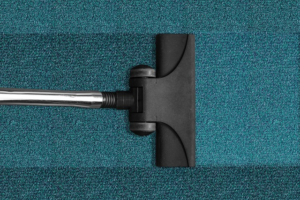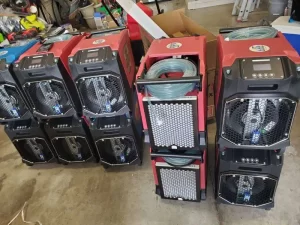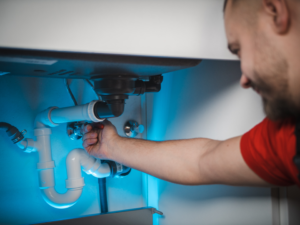Your home’s ceilings are often a place that gets overlooked – or, rather, under-looked! However, they are vulnerable to particularly dangerous water damage that could lead to big trouble for your whole home. Does a ceiling need to be replaced after water damage? In a nutshell, yes.
Any issues with your ceilings require immediate professional repair in case the structure is compromised.
Today, we’ll discuss what causes these problems, how to identify them, and what steps you can take before calling TN Flood Kings for prompt and professional assistance.
Should Ceilings Be Replaced After Water Damage?
Yes, absolutely. You need to take quick action and remove the damaged drywall as soon as possible, as leaving it alone can cause the structure to collapse. This is because many ceilings are made of drywall, which cannot be thoroughly dried out.
Leave These Repairs to Professional Water Damage Restoration Companies
This is one repair that we never recommend homeowners tackle on their own, as it imperils the structural integrity of the whole home.
Compromised ceilings pose major safety risks, as the drywall may collapse; they can also require costly repairs that necessitate you leave your home for your own well-being.
Whenever you see the below problems with your ceiling, call TN Flood Kings right away so we can begin the repair process and prevent further structural damage.
What Causes Water Damage to Ceilings?

There are a variety of reasons your ceiling may develop water damage, but these are some of the most common.
Roof leaks: If your ceiling always gets damp or leaks after a storm, this indicates there’s a problem with your roofing.
Plumbing issues on upper levels: Particularly common around upstairs bathrooms, this may be obvious and dramatic, such as a burst pipe, or it may be slow and stealthy, like a small water leak.
Clogged gutters: Malfunctioning gutters lead to extensive structural damage throughout the structure, including in the ceiling.
What Are the Signs of a Water Damaged Ceiling?

When looking for these signs, pay close attention to these seams where the drywall meets the joist, as this is the most vulnerable area.
Discoloration
Yellow or brown lines or spots indicate that the drywall has gotten wet, either recently or in the past.
Visible moisture
You may see beads of water or slow drips, which may move down toward the walls if your ceiling joists are not perfectly even.
Wallpaper Or Paint Damage
Depending on the location of the leak, the water will begin to drip down the walls as well, leading to peeling, bubbling, or loose wallpaper or paint.
Mold Growth
Mold loves moist drywall, and it almost always accompanies water damage that hasn’t been immediately dried. Look for lines, patches, or tiny dots of brown, green, or black mold.
How to Fix Ceiling Water Damage

There are some quick ways you can prevent further damage while you wait for TN Flood Kings to repair your ceilings. You should stay out of the area as much as possible as you perform these safety measures.
Locate and Stop the Water Source
You must find what’s causing the problem and rectify it if at all possible. Turn off water if you suspect a leak.
Dry the Ceiling
Open windows in the area and set up fans to disperse water and prevent mold.
Call for Professional Help
Call TN Flood Kings right away so that we can begin the repair process. We’ll remove damaged sections, thoroughly dry the area, and ensure that everything is safe and mold-free.
Call TN Flood Kings 24/7 for Water Damage on the Ceiling! We Bill Directly to Insurance!








